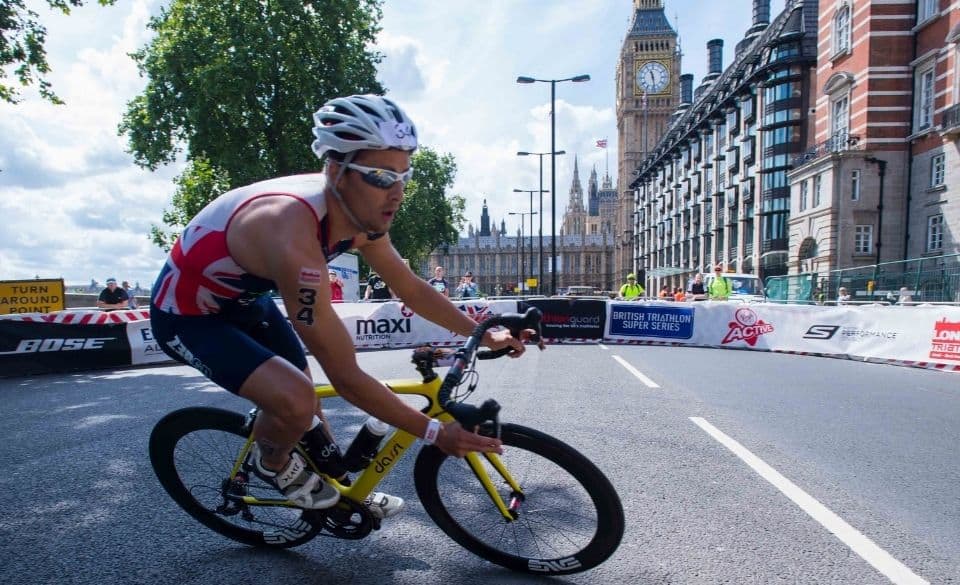
Hairpin Turns For Triathlons – UPDATED 2021 – A Complete Guide
Page Contents
Often when triathletes are tested with hairpin turns in triathlon, many fail. Many people enter these types of corners with too much speed or leave the aero position too late. So in this article, we dive into the best way to tackle hairpin turns for triathlons.
Keep reading to find out what a hairpin turn is and the best technique for this type of cornering.
Hairpin Turns – A Complete Guide
While hairpin turns are not so common in big triathlon races, some events have no choice but to utilize them. One of these events is the famous Alpe D’Huez triathlon in France. This iconic race takes competitors on the bike over the famous Alpe D’Huez climb that tests the fitness of competitors by taking them up 21 hairpin corners.
Other smaller events use hairpin turns for triathlons to design out and back courses. That allows shorter road segments to be used and provides friendlier viewing for the crowd. These types of hairpins are often around a cone or something similar.
Both types of hairpins in triathlon require some practice, especially when descending or speeding into a 180° turn.
When descending a hill that includes hairpin turns, it is important to identify any corners ahead. While this may sound easy, many triathletes leave braking too late. This often leaves them with too much speed into the corner, causing them to brake quickly, and even worse, crash. So, it is crucial to understand that the more time you have heading into the corner, the better you can estimate your entry speed.
Alternatively, if your racing on the flat in a triathlon and heading towards the course turnaround, similar protocols should be followed. However, one thing that should be remembered is to sit up from the aero bars in the last 50-100m before the hairpin turn. Doing so gives your time to brake accordingly and have better control throughout the corner.
Both types of hairpin turns for triathlon require the rider to leave the aero bar position and utilize the base bar. Doing so gives you better control of the bike, easier access to the brakes, and moves your weight more to the center of the bike.
Whether you’re climbing a hill or descending, or even racing over a flat course, some techniques can help you enter the corner with more speed. Thus, allowing you to exit the corner faster.
Focus on entering the hairpin as wide as possible. This allows you to cut into the corner and give your more room to exit the corner with speed. Doing so provides better visibility as well as maximizing space if you enter the corner too fast.

What Is A Hairpin Turn?
A hairpin turn (also named a hairpin bend or hairpin corner) is a tight corner that turns almost 180°. Hairpin turns are commonly used on steep mountain passes and help eliminate the steep gradients in the road.
Alternatively, a hairpin turn is used in some smaller triathlon races and criteriums. During a triathlon, this type of turn is used when the course is an out and back route. This type of turn is usually on flat terrain rather than on a mountainside.
Cycling criteriums such as the old “Bay Criterium’s” in Australia used to use a two hairpin course during the Geelong stage of the criterium series. This type of “hotdog” course provides a fast-paced race that brings in a large crowd that allows people to get a better glimpse of the riders as they brake hard into the corner and accelerate out of it.

Hairpin Turns During Triathlons & Cycle Race
While hairpin turns during a triathlon and cycle race may not seem like a big deal, they can often make or break your race.
Slowing down and accelerating uses energy and breaks your rhythm and a hairpin turn does just that. For example, a criterium cycle race that includes these types of turns requires a lot of acceleration out of the corner and the further back you are in the peloton, the harder you will need to accelerate to stay with the group.
While triathlons aren’t as aggressive, slowing down and accelerating still uses energy and breaks up your rhythm on the bike. So it is important after exiting the corner in a triathlon that you gradually build up your speed and settle into your rhythm again. There is no need to accelerate as you would in a bike race since you control your own speed.
During entry and exit into a hairpin turn, this is also a good time to take in some quick nutrition. If you’re an experienced triathlete on the bike and have good bike handling skills, you can use the entry or exit periods for a quick drink or energy gel. However, if you are a novice triathlete, we recommend you first practice this before utilizing this in an event.
Once you have learned to enter and exit a hairpin turn with speed, it can be a valuable asset. During criterium bike races, it will allow you to move up in the field without wasting energy. While in a non-drafting triathlon, it can help you gain time over your competitors, give you a brief period to recovery, and get time checks on athletes in front or even behind you.



